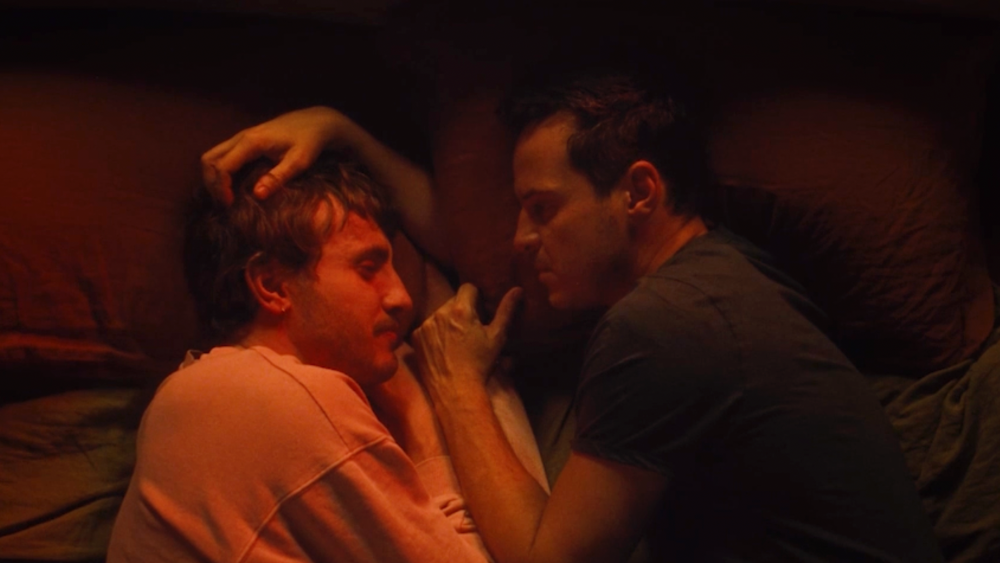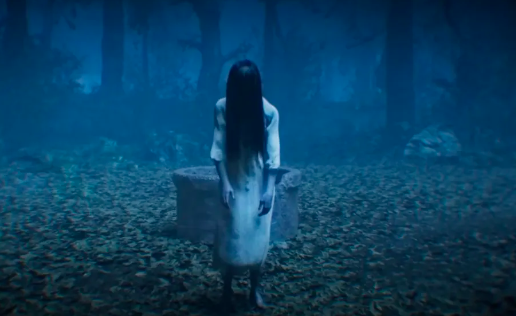Books & Culture
A New Documentary About Gabriel Garcia Marquez Highlights the Joy He Brings to Readers
Justin Webster’s ‘Gabo’ shows why the author is so beloved, especially in his home country of Colombia

I know how much of a cliché it makes me to say that Gabriel García Márquez is my favorite writer and Hundred Years of Solitude my all-time favorite book. As a Colombian, I worry that this preference reads as mere knee-jerk regionalism or worse, an example of a stunted literary taste. But what else am I supposed to think of an epic work that is at once so astonishing and so familiar? When I first encountered this sprawling novel in 9th grade, we were scheduled to spend an entire semester reading it, but I went ahead and finished all 400-plus pages in one weekend. It was the very first book I devoured, as unlikely a page-turner (will the dirt-eating bastard girl ever find happiness again? will the doomed butterfly-surrounded lovers make it, after all? will anyone really be born with a pig’s tail?) as I’ve yet to encounter. In the intervening seventeen years I have come to think of Gabo as a familiar presence in my life, someone whose prose can transport me back not just to that blissful weekend I spent reading the story of the Buendías for the first time, but to my own family experiences and conversations, which he was somehow able to conjure up in his novel.
As I watched Justin Webster’s reverent documentary Gabo: The Creation of Gabriel García Márquez, my relationship with the Nobel Prize winner came flooding back. Even though (or, perhaps, because) I’d already heard the many anecdotes and stories being shared in the film by his siblings, his colleagues, and fans around the world (including President Bill Clinton), Webster’s documentary reminded me how much of my teenage obsession with Gabo has grown into an appreciation for the way he captured the Colombia I grew up with and which I now long for from abroad.

Serving as a kind of abridged biography-cum-critical-overview, Gabo: The Creation of Gabriel García Márquez tries to analyze what it is that made the novelist so unique. This is, as it turns out, an insurmountable task, not least because the answer lies more within his pages than in his life — though the impetus to think of the two as intricately intertwined is precisely why his novels resonate so far beyond the borders of my native country. Like many studies of Gabo’s novels over the past several decades, Webster’s documentary focuses on wanting to offer viewers many of the “real life” stories of his life that went on to be immortalized in his words. Readers of Chronicle of a Death Foretold, for example, get a chance to see the actual town square where a young man was, indeed, knifed down by two drunken brothers, while fans of Love in the Time of Cholera get to hear (perhaps yet again) the story of how Gabo’s parents got together, which went on to inspire that 1985 novel. Except, since he was such an expert chronicler as well as such a keen raconteur of his own life (his two memoirs, Living to Tell the Tale and Memories of My Melancholy Whores, are nothing short of required reading), any attempt to illuminate his life and work cannot help but leave one wanting. The anecdote is never quite as beguiling as the chronicle; the former remains unpolished and credible, the latter — especially in Gabo’s hands — emerges as perfectly whittled and almost preposterous but also, and this is crucial, believable. (Unsurprisingly, Webster’s doc is infinitely more engaging when delving into the writer’s often under-discussed journalistic career.)
But there is one thing the documentary captures better than anything I’ve read on the Colombian writer: the utter joy readers find in his work. The most heartwarming and engaging moments of the film come courtesy of the passages of his writing that are read out loud by Webster’s many talking heads.
I’ve lived with Gabo’s words for much of my life. He was an ubiquitous presence throughout my high school years—the kind I imagine Pablo Neruda is in Chile and Shakespeare is, well, everywhere in the English-speaking world. Despite having moved no less than eleven times (twice to different countries), I still have my textbook paperback copy of Hundred Years, a torn corner of its cover serving as a makeshift bookmark. In its pages I can trace my own 2000-era musings on the Buendías: the very first blank page of the novel, in fact, has a key to the many symbols I used to flag important moments and recurring motifs that, even as a 9th grader, suggested I had a critical inclination that made the rest of my classmates snicker in contempt. Some are pretty self-evident; a heart symbol can be found next to highlighted passages where love was concerned, an “S” marks places when García Márquez talks explicitly about solitude, an exclamation mark stands next to “important moments” (which, apparently, I doled out with abandon, all but making this indexing an almost futile exercise). Others were more needlessly complicated: a tiny book with a B emblazoned in its cover signalled moments when the Buendía story echoed, mirrored, or read like a Biblical tale (I don’t know where I was going with that), two butterflies appear next to scenes where “yellow” (yes, just the color) appeared as a visual motif, and a comically small tombstone charted the many (oh so many!) instances when death was mentioned. To rifle through these pages is to witness firsthand just how bewitched I was by this novel and how eager I was to unlock its many secrets.
He was an ubiquitous presence throughout my high school years — the kind I imagine Pablo Neruda is in Chile and Shakespeare is everywhere in the English-speaking world.
The many underlined passages (I could never bring myself to use highlighter and opted for the clean lines of a mechanical pencil, and hated marginal comments which is why I doodled symbols instead) trace my very first instincts as a critical reader, wanting to connect disparate moments, bringing together images that recurred, and hoping to piece together the puzzle that was Hundred Years. Now, though, they serve as a time machine of sorts. Sure, these highlighted passages served a scholarly purpose. They were a way for me to call up needed quotes in the essays and exams I wrote on the novel during that semester (the only other novel that the Spanish department allotted more time in their curriculum was, unsurprisingly, Miguel de Cervantes’ Don Quixote which took up one’s entire senior year). But they also function as a window into my high school self. I can glimpse, for example, why I was drawn to several underlined passages — “Only he knew at that time that his confused heart was condemned to uncertainty forever” is the kind of sentence a sensitive lovesick teenage boy would be drawn to — while others surprise me: what did I make of a line like “Little by little, however, and as the war became more intense and widespread, his image was fading away into a universe of unreality”? Reading it now, out of context and in translation, I’m struck by how perfect a description of Gabo’s work it is.
‘Phantom Thread’ Is the Love Story for Assholes We’ve All Been Waiting For
Like many of our Spanish textbooks, my edition of Hundred Years was published by an imprint called “Cara y Cruz” (Heads and Tails). The book included the full length of the novel on one side (“Cara”) and a series of helpful texts, including the author’s biography, standout quotes about the novel, a suggested bibliography as well as a short essay on the novel at hand (“Cruz”) on the other. For García Márquez’s 1967 text, the editors chose a feature by Carlos Fuentes titled “La Segunda Lectura” (On Second Reading). Nearly two decades after I first read it, the piece continues to color my own appreciation of the novel. With One Hundred Years of Solitude, Fuentes argues, García Márquez had given Latin America the chance to be mythic, making the many pasts and presents of the region come alive at the same time. “In each of these acts of fiction,” he writes, “the positivist time of the epic (this really happened) and the nostalgic time of an utopia (this could’ve happened) die and give birth to the absolute present time of the myth: this is happening.” It’s the only line in his essay I underlined and one I’ve gone back to revisit over the years — I used it for an essay on magical realism in Louise Erdrich’s Tracks in my freshman English course and recycled it again to talk about Faulkner’s As I Lay Dying the following year. Even as Webster never quite puts it in those words, the central thesis of his documentary merely echoes Fuentes: we may get the sense that the creation of Gabriel García Márquez requires us to revisit his hometown and talk with his family (and even with his Parisian girlfriend whom he left eventually to marry his sweetheart Mercedes), but only so that we will be better able to admire the way his prose borrowed but by some literary alchemy the likes of Melquiades in Hundred Years, he bore a new way of looking at his life, his country, and the world.
The promise and premise of a book like One Hundred Years of Solitude is the way it represented Colombian reality in the guise of novelistic myth. And so, in order to offer an origin story for a writer like García Márquez, one must work backwards, tracking the inspirations that led to the beguiling stories that have made him a worldwide sensation. The world of Macondo, the fabled small town that’s at the center of Hundred Years, functions as a microcosm of Colombia (and, by extension, Latin America). Framed by actual historical events — the civil war that beckons Aureliano, the banana massacre that only José Arcadio Segundo witnesses — Macondo exists at the intersection of reality and allegory. The magical realism that it helped globalize depends on reevaluating how we tell stories about what “really happened.” It’s no surprise that, to many who did not grow up in households where talk of spirits wasn’t uncommon (my grandmother spoke plainly about how her sister could divine who’d be dying next in the family as they’d appear to her in dreams) and in a country where one’s own national history seemed plausibly implausible, where a massacre could be both urban legend and historical fact, the impetus to understand Gabo’s work would focus on universalizing his words while at the same trying to anchor it in the mundane.
The promise and premise of a book like One Hundred Years of Solitude is the way it represented Colombian reality in the guise of novelistic myth.
“He chronicled, in a thousand different ways,” Clinton muses at one point in Webster’s film, “the futility of denying the promise of the human spirit.” Except, of course, Gabo’s books, no matter how universal they may feel, are, in essence, snapshots of a region. They’re so specific, so grounded in the particular, that their universality feels almost accidental. He said as much while accepting his Nobel Prize in 1982. Speaking in Stockholm, Gabo positioned his work as but an attempt to capture the implausible history of Latin America, with its mythical fauna, its delirious mundanity, and its virulent violence. “I dare to think,” he said, “that it is this outsized reality, and not just its literary expression, that has deserved the attention of the Swedish Academy of Letters. A reality not of paper, but one that lives within us and determines each instant of our countless daily deaths, and that nourishes a source of insatiable creativity, full of sorrow and beauty, of which this roving and nostalgic Colombian is but one cipher more, singled out by fortune.” Having moved abroad shortly after reading Hundred Years, I’ve continued to find in its pages a sense of a lost home, one nurtured both by my own childhood imagination as by my nostalgic reminiscences as an adult. An “unreal” Colombia that nevertheless feels like home.








